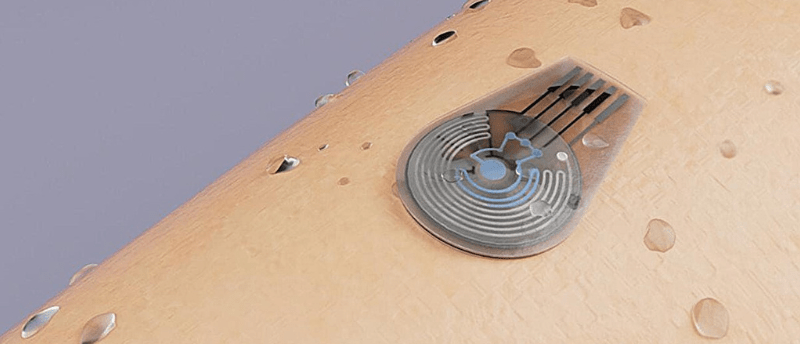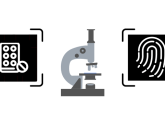Sweat tech: the latest microfluidic patch for measuring trace perspiration

Perspiration is critical for thermoregulation but also plays a hand in echoing the body’s internal state and response to stimuli. Non-invasive, real-time monitoring platforms such as microfluidic systems and lab-on-a-chip technologies are rapidly emerging and offer the potential to diagnose or predict disease outcomes. A team from the University of Tsukuba (Ibaraki, Japan) has developed a lightweight, wearable device able to constantly measure trace perspiration volumes, with applications spanning dehydration monitoring, daily health management and disease detection. The findings were published in Advanced Sciences.
The microfluidic patch is 1 mm thick and its channels comprise sponges made from a superhydrophilic polymer, emulating the water absorption mechanisms observed in plants. The sweat entering the channel is colored with food dye to allow visual confirmation of the volume and rate of perspiration. The device also incorporates a sensor that constantly monitors the concentration of hydrogen ions, as well as sodium, potassium and glucose ions.
You may also be interested in:
- New microfluidic platform increases microdroplet formation rate
- Accelerating quantification of oligo therapeutics with robust microfluidic methods
- Lab-on-a-Chip and Microfluidics Europe 2024
Previously, wearable technologies could only monitor considerable sweat volumes or required invasive biofluid access via blood tests to monitor dynamic physiological status continuously, making this a huge step forward for non-invasive physiological monitoring. The patch can track insensible perspiration, i.e., water vapor that evaporates passively from the epidermis, meaning sweat levels can be monitored during physical activity and also during rest.
The microfluidic patch has been tested on various body parts during routine daily activity and demonstrates effective and reliable measurements. This is the first time that flexible, porous, superhydrophilic matrices have been synthesized into sponge channels and integrated into a microfluidic system, marking a significant milestone in wearable, non-invasive technologies.






